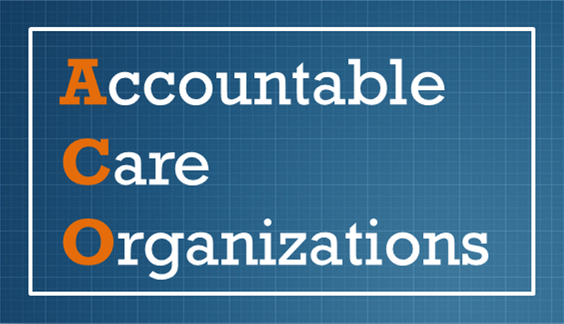Blue Shield, Accountable Care Organization Saved $325 Million
Blue Shield of California alongside its Accountable Care Organization provider have garnered $325 million in cost savings throughout the last five years of the program’s inception.

- In recent years, there has been plenty of concern about whether or not Accountable Care Organizations (ACOs) bring significant cost savings to the healthcare industry. However, one health payer and ACO have proven that it is possible to make a difference to both the quality of healthcare delivery and effective medical spending.

Blue Shield of California alongside its Accountable Care Organization provider have garnered $325 million in cost savings throughout the last five years of the program’s inception, according to a company press release.
Blue Shield of California announced this news at the Milken Institute's 2015 California Summit. Blue Shield teamed up with its ACO provider in 2010 and, since then, has been working to ensure their patient base receive better care in their perspective medical setting.
 The results show the success of the accountable care program – hospital admissions, for instance, have decreased by 13 percent while the number of hospitalization days fell by 27 percent. Kristen Miranda, Blue Shield's senior vice president of strategic partnerships and innovation, provided this data to the attendees of the Milken Institute’s 2015 California Summit.
The results show the success of the accountable care program – hospital admissions, for instance, have decreased by 13 percent while the number of hospitalization days fell by 27 percent. Kristen Miranda, Blue Shield's senior vice president of strategic partnerships and innovation, provided this data to the attendees of the Milken Institute’s 2015 California Summit.
“We have achieved solid results in the first five years of our ACO program, and we are just getting started. We continue to deepen and refine the work we are doing with our ACO providers to ensure our members receive the right care at the right time and in the right setting, all the while helping to make healthcare more sustainably affordable,” Miranda stated at the summit.
The health payer Blue Shield has been one of the few to form close relationships with key physician groups in an effort to strengthen medical care services and work toward improving care coordination between hospitals and medical practices. The overall goal of Blue Shield and the accountable care movement is to ensure quality of care among its patient base as well as ensuring significant cost savings for the healthcare industry.
“The ACO partnership with Blue Shield has achieved more than I originally envisioned. A combination of teamwork, creativity and innovation has yielded results that we’ve been able to spread throughout our entire network,” Rosaleen Derington, Chief Medical Services Officer of the Hill Physicians Medical Group, said in a public statement. “The focus on continuous improvement has made the experience valuable, not only for our patients but also for our physicians.”
In 2010, the Accountable Care Organization included a few medical groups such as Hill Physicians in Northern California and Dignity Health but has grown substantially since. Today the accountable care program includes 35 ACO collaborations that help treat and manage the health of 325,000 California residents.
“It’s through partnerships like the one we enjoy with Blue Shield of California that are advancing healthcare in California and across the nation,” said Lloyd H. Dean, president and CEO of Dignity Health. “We look forward to continuing our collaboration with Blue Shield to realize the promise of the Affordable Care Act for all patients.”
 While there have been some anecdotal positive results shown within the development of Accountable Care Organizations, the American Journal of Managed Care mentioned that the Medicare Shared Savings Program and ACOs face significant challenges for the coming years.
While there have been some anecdotal positive results shown within the development of Accountable Care Organizations, the American Journal of Managed Care mentioned that the Medicare Shared Savings Program and ACOs face significant challenges for the coming years.
The largest problem that faces the Shared Savings Program includes the fact that 2014 data shows ACOs performed worse with regard to cost savings than in 2013. Most cost savings are seen among only a small subset of the ACO population and only about 25 percent of Accountable Care Organizations actually earned shared savings.
Among the 86 ACOs that earned shared savings last year, the average cost reductions were actually 33 percent less than in 2013. The problem at hand is that the Centers for Medicare & Medicaid Services (CMS) spent $1.15 trillion in two years to develop the ACO program but the nation’s ACOs have garnered only $1.5 billion in cost savings since their inception.
Essentially, the accountable care program will need to significantly boost its reduction in healthcare spending in order to come out even with the costs that were necessary to create the entity to begin with.
The American Journal of Managed Care explained that ACOs will need to serve a much larger amount of the patient population in order to succeed over the coming years. CMS and the Department of Health and Human Services have a goal of ensuring that at least half of Medicare reimbursements be in the form of bundled payments or other value-based payment models instead of fee-for-service by the end of 2018.
“Until the ACO program is redesigned to produce improved odds at achieving shared savings, provider participation will decline, and the decline could conceivably accelerate because, knowing Medicare fee-for-service is increasingly moving toward risk-based performance agreements, providers will choose instead to contract with MA plans,” the publication stated.
In order to achieve this goal, ACOs and other managed care programs will need to begin serving more patients throughout the country. While the growth of ACOs has not been growing as quickly as hoped, as many as 70 percent of the US population reside in regions serviced by an Accountable Care Organization. In 2014, an additional 4.5 million more patients were being serviced by an ACO with a total of 23.5 million visiting an ACO provider countrywide.
As such, it continues to be a goal of the accountable care program to serve a larger portion of the patient population and gain greater cost savings.
